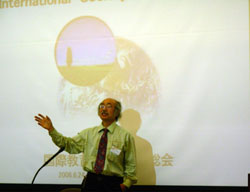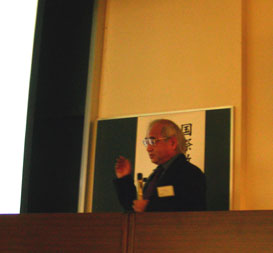◆ June 24
International Society for Education establishment general meeting
・Place Doshisha University (Neiseikan
N31 room of the fourth floor)
・Program
Organization meeting
【1】About the establishment outline
【2】About the director
【3】About the regulations of a society
【4】Others
Lecture meeting
【1】Goro Kato (Professor of California Polytechnic State University,
San Luis Obispo)
"United States mathematics education"
Math War in California
California Polytechnic State University,
San Luis Obispo
 Goro Kato Goro Kato
The U.S.A had a stronger mathematics
educational system during 1950's and 1960's. When the performance
in mathematics got worse in 1970's and 1980's, less demanding
mathematics was introduced (i.e., changing the standard of mathematics)
to get better results in the test's scores. In 1990's, more minority
oriented math program was introduced by math education people
at colleges. This movement around 1995 in math education is often
referred to as Soft Math. It is easier and more entertaining,
but lacking in rigor. As a result, many students easily got A's,
and consequently most of the students got A's or B's, and rarely
got C's.
This "happy results" made many students got into
good universities with their GPA even higher than 4.00 (with
AP classes). But happy freshmen with GPA>4.00 met the demanding
college standard. All of sudden, those good student are getting
grades C's, D's and even F's at colleges. That is "playing
house" attitude during their high school time met the reality
in colleges.
Soft math was created as an interplay among:
(1) Minority oriented programs are more likely supported as
projects proposed by math education professors. (Note that Ed.
D. or Ph. D in math education can be obtained without having
math degrees in undergraduate or/and master's level.)
(2) High GPA made students and their parents happy, (consequently,
no complains from parents to teachers.)
(3) Especially, grade school teachers with Liberal Art degrees
welcome soft math since they don't have to solve math problems
rigorously.
(4) As noted in the above, good GPA made more students admitted
to good universities.
 【2】Kazuo Nishimura(Professor
of Kyoto University) 【2】Kazuo Nishimura(Professor
of Kyoto University)
"One expected of International Society for Education "
Exchange of participant's opinion |